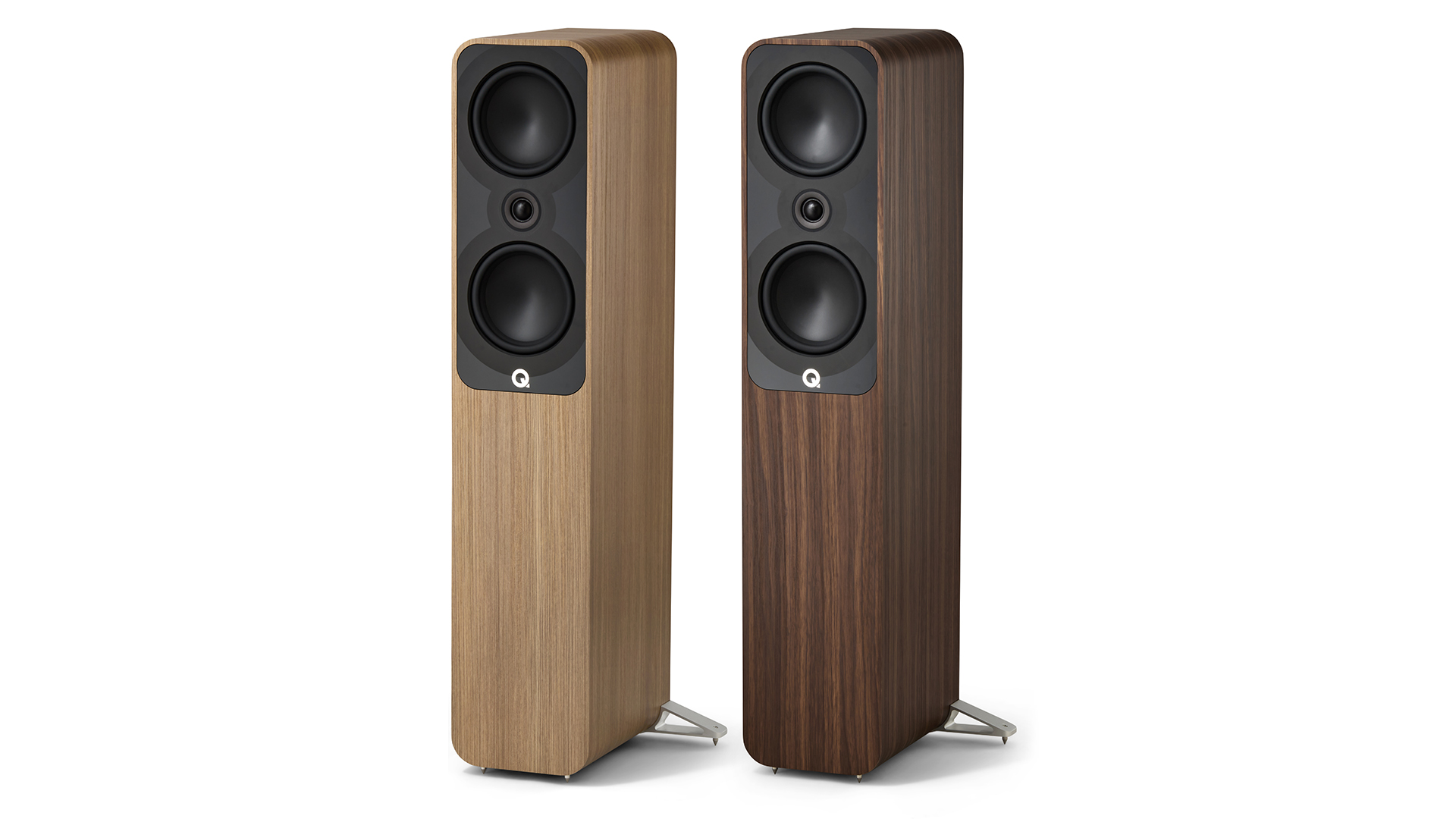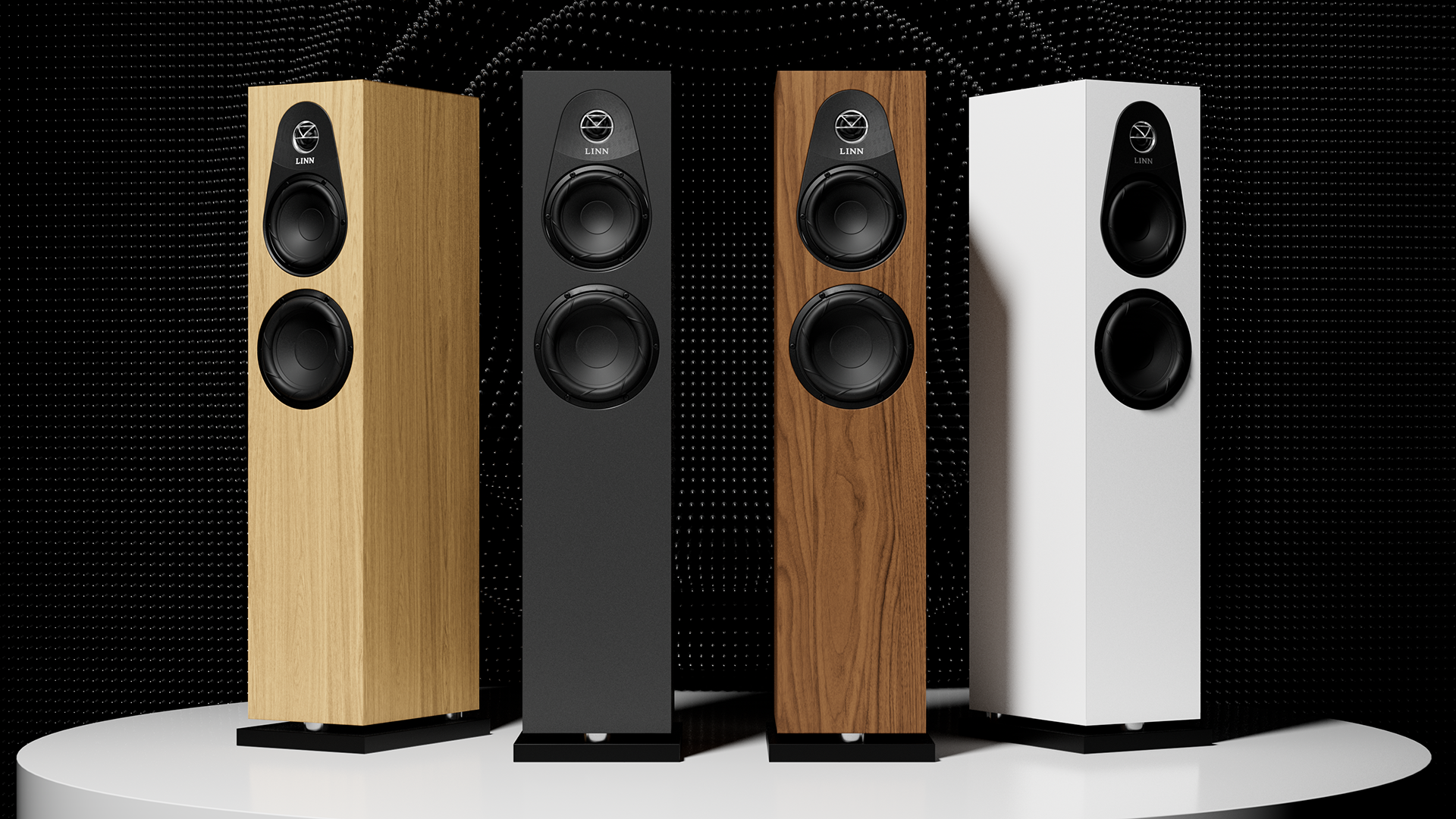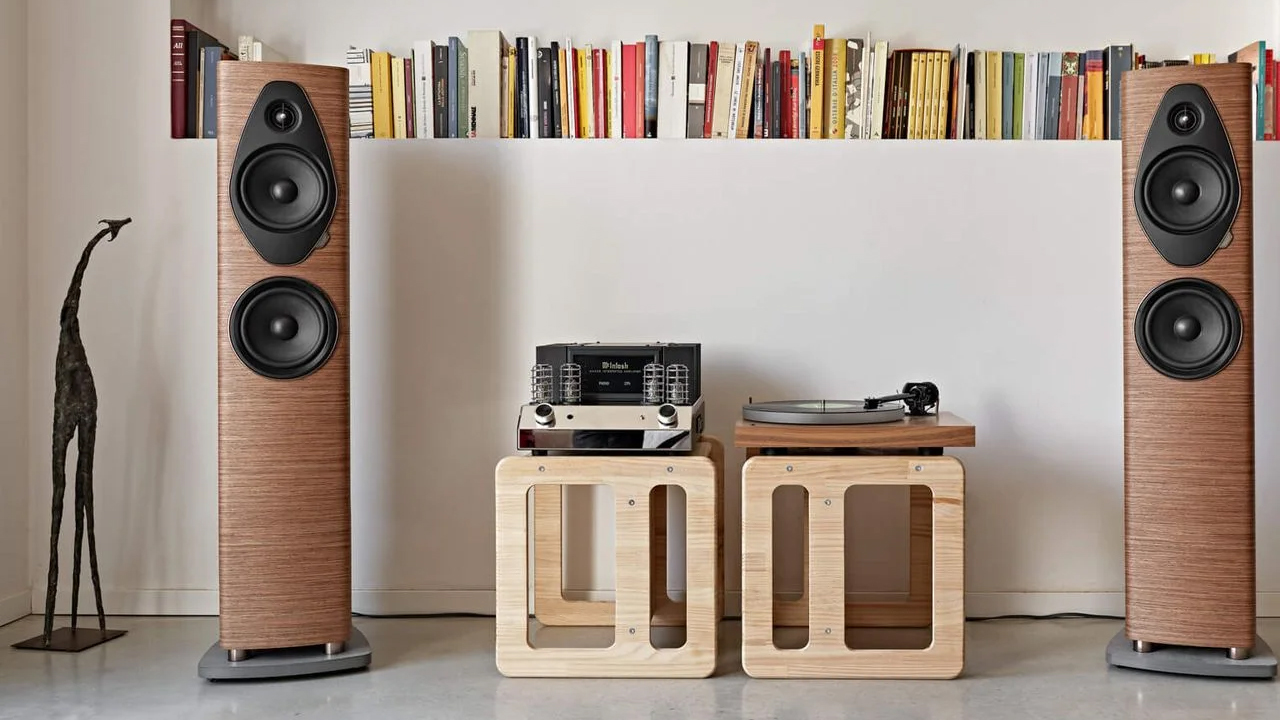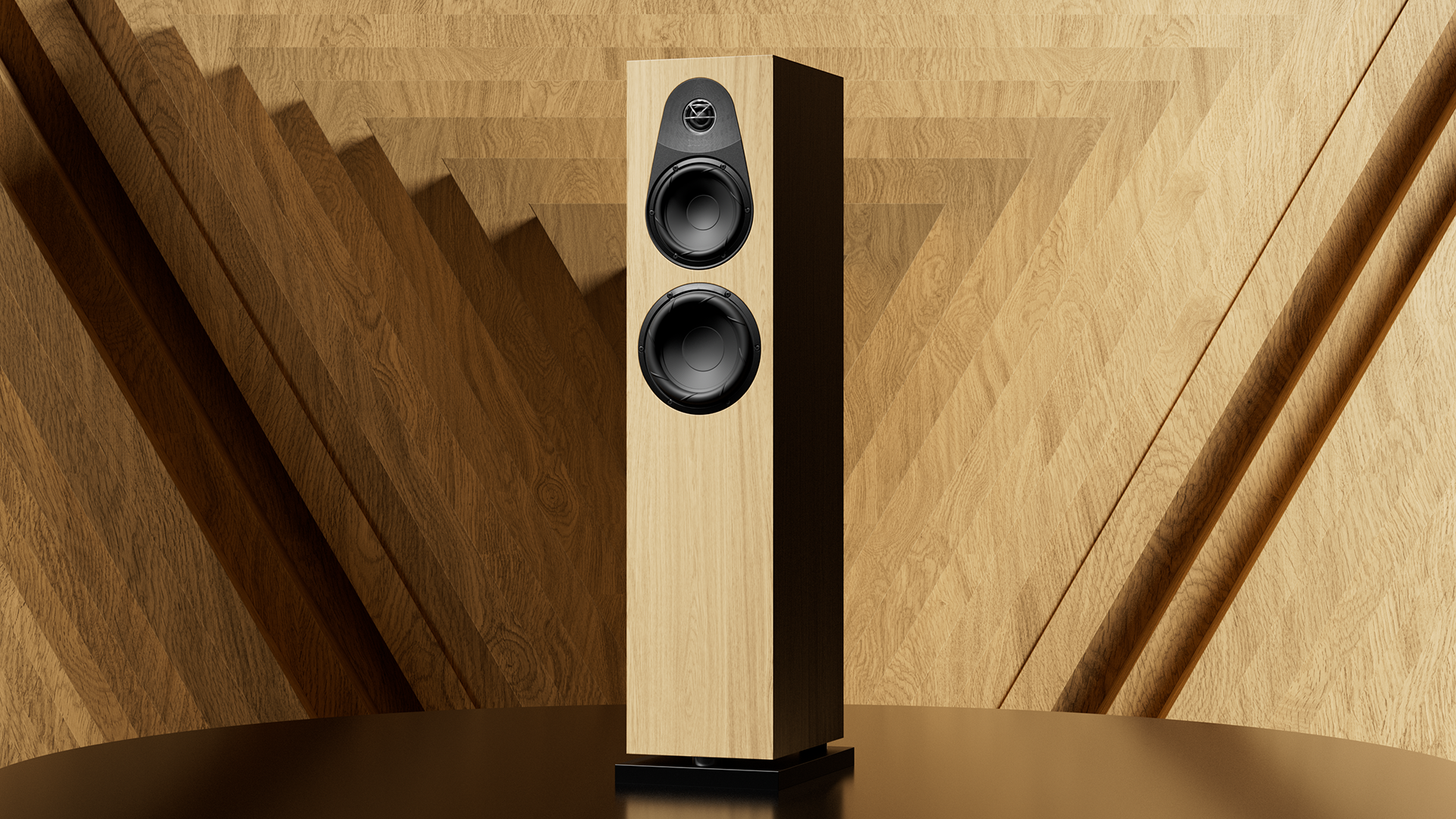Want fancy floorstanding speakers? These are the best 3 for all budgets
We've tested 3 of the best floorstanding speakers – here's which is best and how much you'll have to spend



In the 20-odd years I’ve been testing, reviewing and writing about audio equipment, I’ve seen the death of whole product categories (anyone here remember DVD?) and I’ve seen the resurrection of categories I thought the lid had been nailed down on long ago (most obviously record players, and the vinyl they play). Technology improves, fashions change, and the sort of stuff I write about changes with them.
But some product categories just sail on regardless. Even if they’ve been around for decades, the technology has proven itself and the equipment is just as relevant now as it was when it first became available. Passive loudspeakers are an obvious case in point.
But there's good reason for that: a pair of stereo speakers, driven by an amplifier, is the surest way to get the sound you want into your home and to keep it coming for year after year. That’s why there are so many loudspeaker brands out there – because demand just doesn’t show any sign of fading.
So because it’s Entertainment Month here on T3, I have the great good fortune to select the 3 pairs of passive floorstanding loudspeakers that I think are the most entertaining at their respective asking prices. They all have virtues beyond entertainment, of course, but it’s a great place to start...
T3's Top 3

Almost uniquely, Glasgow’s Linn Products doesn’t even need an introduction about how it needs no introduction. Anyone with even a passing interest in hi-fi, be it analogue or digital, knows the brand by name and by reputation – and these new 150 floorstanding loudspeakers are only going to add to the esteem in which the company is held. A compact three-way design with dual down-firing bass reflex ports and a couple of drivers so far forward in the baffle their surrounds actually project ahead of the cabinet, the 150 are that rarest of things: discreet high-achievers.

What Q Acoustics doesn’t know about delivering great-sounding, good-looking speakers that give every impression of costing more than they actually do quite honestly isn’t worth knowing. And it’s quite possible these 5050 floorstanders are the most ‘Q Acoustics’ design so far: handsome, beautifully made speakers that are happy to partner with an extremely wide range of electronics, come in a variety of very agreeable finishes and, most importantly, have a list of sonic talents as long as your arm. I can think of numerous brands who would happily charge twice as much as this for a speaker half as accomplished.

In an alternate universe, Sonus Faber is celebrated as one of the finest furniture-makers on the planet. The Sonetto III G2 are extremely high-performance designs that will delight their lucky owner for years. As when it comes to craftsmanship, cabinet-work and sheer artisanal excellence, Sonus Faber stands alone. Most loudspeakers are functional-looking items that stand or fall on the way the sound – but even if the Sonetto III G2 didn’t sound as all-around excellent as they do, the temptation to give them a place in your home simply to look at them would be very strong.
Linn v Q Acoustics v Sonus Faber: Pricing
Loudspeakers, of course, are at the very end of your hi-fi chain – as a minimum there will be a single source of music and an amplifier required in order for them to do their thing. And in almost every instance, the price of a pair of speakers more-or-less dictates the approximate price of the electronics they’re partnered with – because there’s no point in spending big on speakers if the electronics they’re working with aren’t capable of exploiting them to the full, and because expensive electronics are wanted if they’re partnering very affordable speakers.
Linn is asking £5500 ($7,150 / AU$11,995) for a pair of its 150 floorstanders, which means it’s by no means the most expensive speaker design the company has produced. This buys you a three-way design (20mm Sonomex tweeter, 160mm Nextel/paper midrange driver, 190mm Nextel/paper bass driver), a pair of downward-firing bass reflex ports, and a choice of oak veneer, walnut veneer, satin black or satin white finishes. Oh, and the ability to tri-amp your speaker if you really want to go to town.
The Q Acoustics 5050 are a more mainstream proposition, given that a pair can be yours for £1299 ($1999 / AU$2999). Your money buys you a 25mm soft dome tweeter and a pair of identical 150mm ‘continuous curved cone’ mid/bass drivers in an elegantly curved and impeccably finished cabinet. On the inside it uses the company’s ‘point-to-point’ bracing technology, and on the outside you can choose from ‘Santos’ rosewood, ‘Holme’ oak, satin white or satin black finishes – the first two are real wood veneers.
Get all the latest news, reviews, deals and buying guides on gorgeous tech, home and active products from the T3 experts
In Sonus Faber-land, meanwhile, it’s carpentry masterclass business as usual. The Sonetto III G2 will set you back £4850 ($5000 / AU$9950) per pair – this buys a cabinet that’s lute-shaped (a Sonus faber calling-card), elegantly proportioned, beautifully constructed and a tactile treat no matter which of the high-gloss black, walnut or wenge real wood veneer finishes you prefer. An integrated concrete plinth makes for a nice contrast to the cabinet, and the 2.5-way line-up of 28mm silk dome tweeter, 165mm mid/bass driver and 165mm bass driver (the last two of which feature the company’s distinctive ‘flower’ pattern) lets you know this speaker is no just for decoration.
Linn v Q Acoustics v Sonus Faber: What's unique?
Passive loudspeakers tend to be very much of a muchness when it comes to features – after all, they only do one thing. But each of these companies has gone its own way when it comes to achieving the best outcome from that ‘one thing’. These are just some highlights.
Linn 150

Linn doesn’t supply the 150 with grilles – there’s not even an option to buy any. Yes, the tweeter is protected by a slender guard in the shape of the company logo, but Linn is adamant the speaker performs at its best without any acoustic cloth between the drivers and your ears.
Forgoing a grille also means the drivers can be mounted so far forwards in the baffle that the surrounds actually project out of the cabinet – this supposedly minimises occlusion and optimises excursion. And it makes for a fairly dramatic look too, no two ways about it.
Q Acoustics 5050

Don’t imagine the speaker’s relative affordability means Q Acoustics hasn’t gone the distance when it comes to engineering the 5050.
For instance, its pair of mid/bass drivers are of the company’s new ‘continuous curved cone’ design – it’s built to offer the best of both straight-sided and flared cone designs.
The lack of dustcap means none of the distortion inherent in that more traditional design, while bass response and high-frequency fidelity are the best each alternative design has to offer.
By way of an encore, the tweeter above these drives is vented, hermetically sealed and decoupled entirely from the front baffle. This way it avoids the effects of pressure changes inside the cabinet and the mechanical vibrations generated by the drivers below it.
Sonus Faber Sonetto III G2

Sonus Faber has positioned the tweeter and the mid/bass driver in an internal box that vents at the rear of the cabinet – and the tweeter has a closed motor system that prevents it from being affected by the mid/bass driver’s activity.
The box itself is organically shaped and made from recycled cork – the company is very keen on this material’s acoustic properties.
The bass driver is in an entirely separate enclosure and features a reflex port that vents downwards onto the fixed boundary provided by the concrete plinth.
Linn v Q Acoustics v Sonus Faber: Which sounds best?

‘Best sound’ is as subjective as ‘best smell’ or ‘most handsome’, quite honestly – we all have different likes and dislikes where the reproduction of music is concerned. But there’s no denying that each of these three speaker designs excels in its own way...
The Linn 150, for instance, is the product of a company that has always valued ‘time alignment’ above all else when it comes to sound reproduction – and by ‘valued’, I mean ‘obsessed about’. Every scrap of information from every part of the frequency range has to reach the listener’s ear at exactly the same time if music is to sound as natural and convincing as possible – and the design of the 150 is intended to do just that. There’s certainly no arguing with the amount of detail, the extraordinarily solid soundstaging, the neutrality of tone or the out-and-out punch these speakers can deliver. There’s ‘naturalistic’, and then there's the Linn 150.
With the 5050, Q Acoustics has moved, just a little, away from the sonic signature with which the company has built a formidable reputation. They’re still an adaptable listen, but where previous Q Acoustics models have been quite easy-going and serene, the 5050 are more dynamically potent, rhythmically adept and insightful. There’s nothing too forceful or upfront about these speakers, but they are much more willing to assert their authority than previous models from the brand. Which, for the avoidance of doubt, is a very good thing.
There’s no tearing up of the rules over at Sonus Faber, though – the Sonetto III G2 adhere to the sound the company has been finessing for over four decades. Which means tonal cohesion, sky-high detail resolution, solid-but-insightful low-frequency presence, and the sort of even-handed frequency response that some other brands would conceivably kill for. And these speakers have the by-no-means common ability to communicate attitude and emotion just as readily as the facts of the actual performance.
Linn v Q Acoustics v Sonus Faber: Which one wins?

If my resources were far greater than they actually are, I’d take a pair of the Linn 150 – naturally I’d have to spend equally big on worthy partnering equipment, and the temptation to tri-amp each speaker would be hard to resist if my lottery numbers actually come up. There’s something so instinctive and immediate about the way these speakers deliver music that I can’t imagine ever getting bored of it.
But while there’s nothing at all wrong with the way the Linn 150 look, if my considerations are aesthetic as much as sonic, then the Sonus faber Sonetto III G2 have to be my pick. I’m not in the habit of touching speakers simply for the sake of it, you understand, but for these I’ll make an exception. And I’d make sure they were sympathetically lit at all times, too.
My resources, though, are rather more modest than Linn or Sonus Faber ownership allows. But that’s not a problem, not really – because the Q Acoustics 5050 are a huge amount of speaker for the sensible, real-world asking price. On a pound-for-pound basis they’re a match for these other two pairs all day long.
Honorable mentions
The world is far from short of passive floorstanding loudspeakers, of course, at prices ranging from ‘very reasonable indeed’ to ‘absolutely stratospheric’.
At one end of the scale there’s a strong case to be made for the Wharfedale Diamond 12.3 – for only three figures you get an expressive and poised sound from a cabinet that doesn’t look or feel built down to a price.
At the other end, a pair of Bowers & Wilkins 801 D4 Signature will set you back £47,500 ($55,000 / AU$85,000) – but where sound quality is concerned (as well as visual impact), ‘prodigious’ only starts to cover it.
Simon Lucas is a freelance technology journalist and consultant, with particular emphasis on the audio/video aspects of home entertainment. Before embracing the carefree life of the freelancer, he was editor of What Hi-Fi? magazine and website – since then, he's written for titles such as Wired, Metro, the Guardian and Stuff, among many others. Should he find himself with a spare moment, Simon likes nothing more than publishing and then quickly deleting tweets about the state of the nation (in general), the state of Aston Villa (in particular) and the state of his partner's cat.
You must confirm your public display name before commenting
Please logout and then login again, you will then be prompted to enter your display name.
